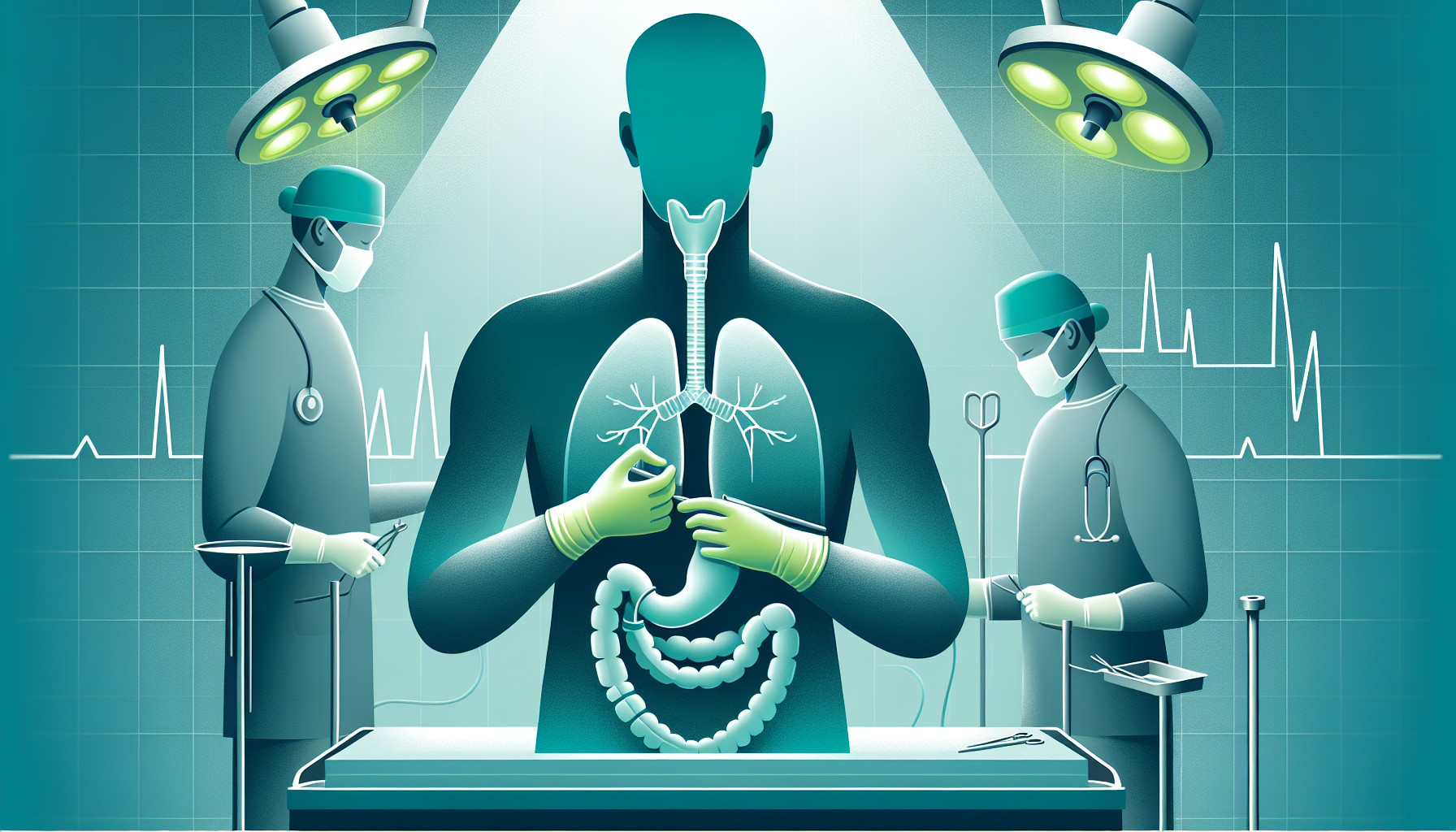Our Summary
This research paper is about a new method for treating early stage esophageal cancer. The best treatment currently involves removing parts of the esophagus, a tube that runs from your throat to your stomach, after pre-treatment with chemotherapy and radiation. However, this surgery has its limitations, especially when it comes to accessing and seeing clearly the area between the lungs (the mediastinum). The research team has developed a new surgical tool that helps to improve this process during surgery. They describe how they use this tool for a better dissection of the mediastinum during this type of surgery.
FAQs
- What is the best treatment for early stage esophageal carcinoma according to the article?
- What is the role of the mediastinal dissection during the transhiatal esophagectomy?
- How does the newly developed transhiatal retractor assist in the transhiatal esophagectomy?
Doctor’s Tip
A doctor might advise a patient undergoing esophagectomy to follow a strict diet plan both before and after the surgery to ensure proper healing and minimize complications. This may include avoiding certain foods that can irritate the esophagus and sticking to soft or liquid foods that are easier to swallow. They may also recommend specific exercises to improve swallowing function post-surgery.
Suitable For
Patients who are typically recommended esophagectomy are those with early stage esophageal carcinoma who have undergone preoperative chemoradiation. It is important for these patients to have a good performance status and be fit for surgery. Additionally, patients with other conditions such as Barrett’s esophagus with high-grade dysplasia or refractory benign esophageal strictures may also be recommended for esophagectomy. Ultimately, the decision to recommend esophagectomy will depend on the individual patient’s specific circumstances and the recommendation of their healthcare team.
Timeline
Before esophagectomy:
- Patient is diagnosed with early stage esophageal carcinoma and undergoes preoperative evaluation, including imaging tests and consultations with various specialists.
- Patient undergoes preoperative chemoradiation therapy to shrink the tumor and reduce the risk of cancer spreading.
- Patient is admitted to the hospital for the esophagectomy procedure, which may involve a transhiatal approach.
After esophagectomy:
- Patient undergoes the esophagectomy procedure, during which the surgeon removes a portion of the esophagus and reconstructs it using part of the stomach or intestine.
- Patient is closely monitored in the intensive care unit for several days to manage pain, prevent complications, and ensure proper healing.
- Patient begins a gradual recovery process, which may include physical therapy, dietary adjustments, and follow-up appointments with the medical team.
- Patient may experience difficulty swallowing, changes in eating habits, and potential long-term side effects such as reflux or dumping syndrome.
- Patient is monitored for recurrence of cancer and undergoes regular follow-up tests to monitor their overall health and well-being.
What to Ask Your Doctor
- What are the potential risks and complications associated with esophagectomy surgery?
- How long is the recovery period after esophagectomy surgery?
- What dietary restrictions will I need to follow after the surgery?
- How will my ability to swallow be affected after the surgery?
- Will I need any additional treatments, such as chemotherapy or radiation, after the surgery?
- How often will I need follow-up appointments after the surgery?
- What is the long-term prognosis for patients who undergo esophagectomy surgery?
- Are there any alternative treatment options to consider before proceeding with esophagectomy surgery?
- How experienced is the surgical team in performing esophagectomies, and what is their success rate?
- Can you explain the specific technique that will be used during the surgery, including the use of the transhiatal retractor for mediastinal dissection?
Reference
Authors: Arshava EV, Arshava AE, Keech JC, Weigel RJ, Parekh KR. Journal: Ann Thorac Surg. 2020 Jan;109(1):e67-e69. doi: 10.1016/j.athoracsur.2019.07.076. Epub 2019 Sep 11. PMID: 31520631
